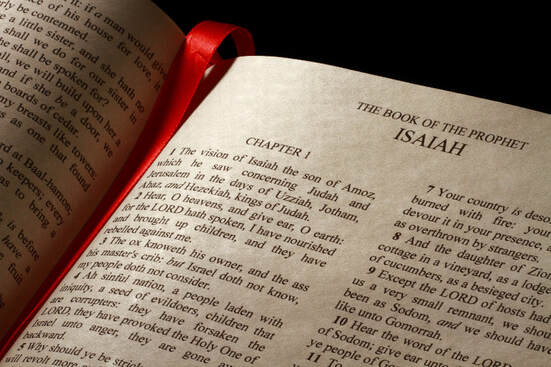One Isaiah, Two Isaiah, Three Isaiah, Four?
The book of Isaiah clearly has two distinct halves – what is sometimes called “first Isaiah”(chapters 1-39), and “second Isaiah” (chapters 40-66). These two halves have very different approaches and themes.
The first half of the book looks at judgment while the second half looks at redemption. The first section focuses on Judah and Assyria, while the second is about Jerusalem and Babylon. The second half of the book also appears to be set about two centuries after Isaiah lived and prophesied. The first half speaks of future captivity for the Jewish people, the second half speaks of their release – from what appears to be the perspective of that later date. There are also specific details which could not have been humanly known in Isaiah’s time. For example, the Persian king Cyrus is named 150 years before he lived (44:28; 45:1).
As a result of these facts, many claim that the second half of Isaiah cannot be ascribed to the same author. Some scholars go one step further and divide Isaiah into three parts by citing differences between chapters 40-55 and chapters 56-66, and yet other scholars see indications of even more Isaiahs – other individuals who may have contributed later sections to many parts of the book. This last viewpoint is based largely on the fact that some ideas in Isaiah (such as the end of the age and the resurrection of the body mentioned in 26:19) are presumed to not have come into existence till much later, and while some sections of the book speak of the prophet in the first person (for example, chapters 6, 8), other sections such as chapters 7, 20, and 36-39 are stories about him, like those we see in the books of Kings – and so they are presumed to have been added by later writers.
Arguments for unity
On the other hand, there are numerous reasons why Isaiah can be viewed as the work of a single author.
Vocabulary and expressions: Isaiah uses by far the largest Hebrew vocabulary in the Old Testament (almost 2,200 different words) and although there are subtle differences between the use of words in the two sections there are at least 25 words and expressions that are used nowhere in the Old Testament except in Isaiah, but which are used in both halves of the book. For example, the expression “the Holy One of Israel” is rarely used in the rest of the Old Testament, but occurs 12 times in Isaiah 1-39 and 14 times in chapters 40-66, suggesting a single author.
Structure: The first half of Isaiah records his commission to preach condemnation (chapter 6), the second half records his commission to preach comfort (chapter 40). Both halves of the book of Isaiah begin with the old city of Jerusalem (1:1 and 40:2) and both close with God’s new city on Mount Zion (35:10 and 66:20). Structural parallels such as these suggest a unity in the work.
Argument from logic: If the prophet could predict the coming of the Messiah in detail hundreds of years before that happened (chapters 42; 53; etc.), he could certainly have foreseen the return of the nation of Judah from eventual captivity, or the name of king Cyrus. This is no different from the foretelling of Josiah’s name and reign three centuries before his birth (I Kings 13:1–2).
Manuscript Evidence: There is no known ancient manuscript of Isaiah, either in Hebrew or in Greek, which is divided in a manner indicating it was originally composed as two or more books. For example, the Isaiah scroll found among the Dead Sea Scrolls, and dating to the second century before Christ, has what we call chapter 40 beginning in the same column that contains what we call chapter 39. This is a strong early witness to the unity of Isaiah.
Evidence of the New Testament: Jesus and the writers of the New Testament all speak of Isaiah as a single individual wherever they quote from the book. In John 12:37-41 Jesus quotes from both halves of Isaiah and attributes both quotes to the same author. Similarly, Matthew 3:3 and 4:14, Mark 1:2 and 7:6, Acts 8:30 and 28:25, and Romans 9:27 and 10:16 all quote Isaiah as a single person.
Conclusion
While it is perfectly possible that Isaiah was edited in some details in the course of later biblical history – perhaps by later prophets – most of the differences between the major sections of the book can be explained by the possibility that Isaiah completed the first half of the book in the period between 740 BC and 686 BC., and the second section somewhat later. The opening of the second section of Isaiah “Comfort, comfort my people, says your God. Speak tenderly to Jerusalem, and proclaim to her that her hard service has been completed, that her sin has been paid for” would then show that the prophet was looking ahead, past the judgment that had occurred, with words of comfort for the new situation of the second half of the book.


 RSS Feed
RSS Feed
